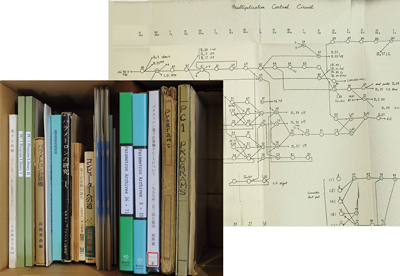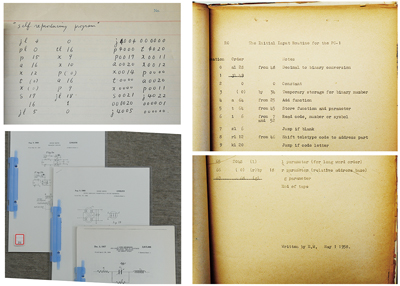

- Home >
- Artifacts of IP Heritage >
- 2013 >
- Parametron arcives
Parametron arcives


| Manufactured in | 1953 |
|---|---|
| compiled by | Eiichi Wada, et. al. |
| Owner | Parametron Archives Committee (Eiich Wada, et. al.) |
| Location of historical materials | Science 7 Building Library, University of Tokyo 7-3-1, Hongo, Bunkyo-ku, Tokyo 113-8656 |
| Visitor information | Not open to the public (visit by appointment only) |
| Contact | Science 7 Building Library Tel 03-5841-4277 librarian@is.s.u-tokyo.ac.jp http://parametronarchives.iijlab.net/index.php?Parametron%20Archives |
Parametron was invented by Eiichi Goto in 1954 when he was a graduate student at Takahashi laboratory, faculty of science, University of Tokyo. Its operation is based on parametric excitation which is basically a frequency divider, being driven by a 2f frequency carrier to produce the f frequency output. The output signal from a parametron has two possible choices in phases, 0 (non-inverted) and pi (inverted), hence it stores single bit information. A network of parametrons performs majority logic when the cells are given three beat excitation, i.e., grouping the stages of cells in three for repeated sequential excitations. Goto built the parametron computer PC-1 in 1958 with his original dual frequency memory which is ideally suitable to parametron computers; the memory unit was also equipped with a reliable word selector circuit utilizing an error-correcting code.
As soon as PC-1 became operative the members of Takahashi lab commenced the development of the program library, e.g. the initial input routines (initial orders) to give the computer in service to the researchers of the university's science school. At that time major Japanese computer companies like Nihon Denshi Sokki, Nippon Telegraph and Telephone (NTT), International Telegraph and Telephone (KDD), Hitachi, Fujitsu and NEC had joined the parametron research group.
The parametron archives consist of the research materials of parametron, the parametron computer PC-1, the applications of PC-1 made by physics and chemistry researches, which include notes, list of papers, major papers, patents, program list of library programs and the complete circuit diagram of PC-1.
As soon as PC-1 became operative the members of Takahashi lab commenced the development of the program library, e.g. the initial input routines (initial orders) to give the computer in service to the researchers of the university's science school. At that time major Japanese computer companies like Nihon Denshi Sokki, Nippon Telegraph and Telephone (NTT), International Telegraph and Telephone (KDD), Hitachi, Fujitsu and NEC had joined the parametron research group.
The parametron archives consist of the research materials of parametron, the parametron computer PC-1, the applications of PC-1 made by physics and chemistry researches, which include notes, list of papers, major papers, patents, program list of library programs and the complete circuit diagram of PC-1.
